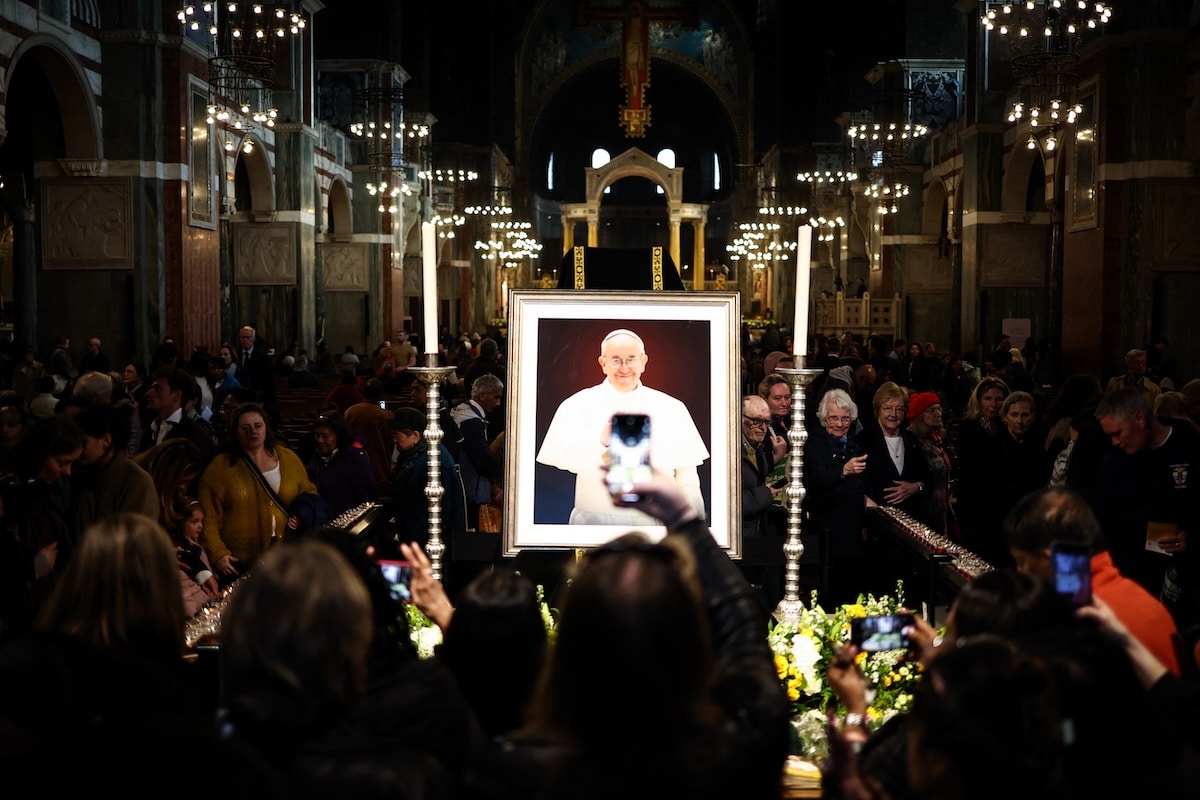
Worshippers take photos of a portrait of Pope Francis displayed throughout the solemn requiem at The Metropolitan Cathedral of the Most Treasured Blood, informally referred to as Westminster Cathedral, in central London on April 21, 2025. (Picture by Henry Nicholls | Agence France-Presse)
PARIS, France — As an at-times unwitting star on social media, Pope Francis knew the best way to exploit the web to evangelise the gospel, broadening the Church’s attraction whereas modernizing its communications.
But the top of the world’s 1.4 billion Catholics, who died on Monday, likewise frequently warned in opposition to the scourge of disinformation, and in recent times took intention on the doable perils of synthetic intelligence.
It was his predecessor, Benedict XVI, who created the papal X presence @pontifex in 2012, at a time when the now-Elon Musk owned website was referred to as Twitter, in a bid to achieve youthful folks.
READ: Pope Francis: Remembering his life, teachings and legacy – Reside Updates
Inside months of its creation, Benedict stepped down and Francis took over, instantly placing social media gold.
The deal with boasts a complete of fifty million followers throughout its accounts in 9 languages, amongst them English, Italian, Spanish, Portuguese, French, Polish, German, and Arabic.
Even its account in long-dead Latin boasts a million followers.
Then, in March 2016, three years to the day after he grew to become pope, the Argentine went even additional by creating an Instagram account.
At present @Franciscus has practically 10 million followers on the Meta-owned platform.
As on X, the Vatican posts each day photographs and movies, principally of a non secular nature, in addition to excerpts from the speeches, texts, and public addresses of the non secular chief.
His final video on Instagram, which consisted of an extract of his speech for the Easter Sunday mass, was appreciated by practically 400,000 folks.
READ: Pope Francis led the church with humility and ease
‘Disinformation and polarization’
That recognition, nevertheless, has not prevented him from criticising the detrimental results of social media.
Whereas they serve “higher to attach us,” they’ll “additionally reinforce our self-isolation,” he notably mentioned in 2019, including that “additionally they lend themselves to the manipulation of non-public information.”
When Musk’s X was accused of spreading false data and manipulating political debate and Europe in January 2024, Francis condemned “disinformation and polarization, the place a number of facilities of energy management an unprecedented mass of knowledge and data.”
Only a few days earlier, he had already condemned an period of “pretend information” and warned in opposition to the abuse of AI to “manipulate folks’s minds.”
Francis himself has been the topic of AI-generated photos which have gone viral on the internet, displaying the pontiff partying in a nightclub or getting married.
In March 2023, photos of Pope Francis wearing a white puffer jacket from luxurious label Balenciaga and a bling crucifix within the trend of American rappers grew to become an web sensation inside a number of hours.
That isn’t to say that the Catholic Church has eschewed evangelizing by way of AI solely.
At present, worshippers wishing to be taught extra about Catholic religion, dogma, and theology can achieve this on platforms equivalent to CateGPT — a play on the title of AI market chief ChatGPT — and HelloBible.

